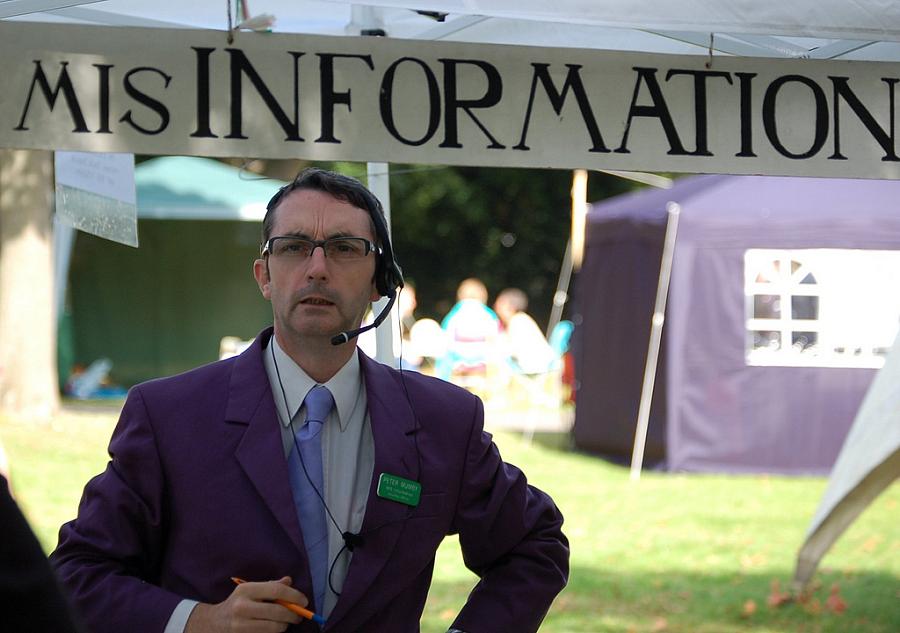How I reported a page-one story on a notoriously discredited anti-vaxxer

Honestly, when I saw the email tipping us off that Andrew Wakefield would be speaking at a Bay Area chiropractic school, I sat on it for a few minutes. I didn’t want to cover it. I didn’t want to hassle with traffic on the drive over and I didn’t want to deal with school officials who’d probably boot me off the campus anyway — and most of all, I really didn’t want to give any press to Wakefield, the notoriously discredited scientist responsible for the dangerous autism-via-vaccination myth. But, of course, I told my editors at the San Francisco Chronicle, and of course they sent me there to cover it ASAP (and take a photo too!).
My concerns about getting kicked out of the school were unwarranted — I breezed right on to the campus and casually took notes during the hour-long lecture, in a room packed to capacity with students who paid no attention to me. After Wakefield spoke, Igotsnappeda photo with my iPhone (we had too little time to get a staff photographer there) and introduced myself to the school CEO, who was clearly surprised to see me but was happy to be interviewed. Wakefield — unfortunately or not, I can’t decide — disappeared before I had a chance to talk to him.
It was the right call to cover the event. If Wakefield had just given a lecture to a bunch of chiropractic students about his “science” maybe we wouldn’t have done a story at all, but he ventured far past that into raising a rallying cry against California’s Senate Bill 277, which would end personal belief exemptions that allow parents to opt-out of vaccinating their children. Wakefield joining that battle was legitimate news.
I balked a bit, though, when I got back to the newsroom and our city editor said it would be going on A1. I hate arguing myself off the front page but I felt I had to try in this case — yes, the story would be a big hit online, I got that, but giving Wakefield a “serious news” spot on A1 didn’t sit well with me. I didn’t argue too hard, though, because I knew I’d lose and I understood why it was an obvious front-page story.
I talked with my editor — our usual health editor was out of the office that day — and we agreed that I’d have to very clearly and aggressively point out in my story that while Wakefield had his followers, he was not a man worth listening to. It’s a strange place to write from for a journalist, but one that had become more comfortable over the past few months of covering the Disneyland measles outbreak and ensuing conversations around vaccination. While I think the vaccination story certainly can be nuanced, I don’t see the issue as a debate, and I don’t treat it that way in my coverage. I don’t seek true balance between pro- and anti-vaccination parties, and while I try to give voice to parents who are troubled by vaccines, I always underscore their quotes with facts.
With Wakefield, it was even more important to plainly give context to his words. He’s a man who is undoubtedly famous — notorious — and for better or worse, a voice in the vaccination story. But he’s a dangerous voice, and I don’t say that lightly.
My editor and I had several conversations over the next few hours about how, and whether, I should include Wakefield’s most incendiary comments. We did include several of them in the story, including one quote in which he warned that parents could have their children removed by Child Protective Services if they refuse to get their kids vaccinated. I’d really hoped that the state senators who authored SB277 would want to directly challenge that quote, but (not surprisingly) they didn’t want to touch it.
In the end, my solution to the Wakefield dilemma — how to write a story I wouldn’t regret about a man who is dangerously wrong — was to state plainly that he’s a discredited scientist whose license to practice medicine had been revoked. That he was, and continues to be, wrong. And then I let his words speak for themselves.
I think it worked. I have no regrets, anyway. The reader response was, well, typical for any story about childhood vaccinations. I heard from a couple dozen readers over the following days, most of whom sent long, essay-like emails about why vaccines are dangerous. I only got one email from a reader who was mad we’d given Wakefield any sort of platform.
And the story did great online. It got more than 500 comments on SFGate.com, our free website (only seven comments on our premium pay-wall site, SFChronicle.com, but most of my stories there don’t get any comments at all) and blew up my online metrics all weekend after the story went up on a Friday afternoon. It’s hard to argue with that.
Photo by jimjarmo via Flickr.

